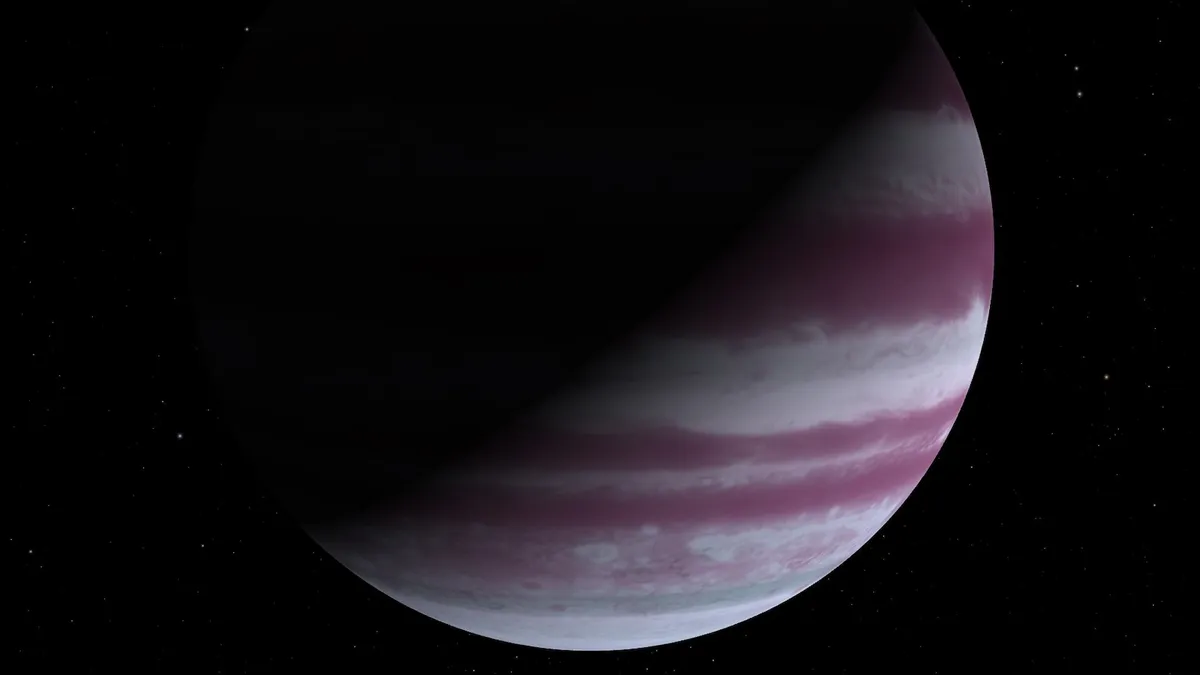
In a groundbreaking discovery, scientists have identified an exoplanet, named WD 1856+534 b, which holds the record for the coldest temperatures ever measured on a planetary body. This gas giant, first detected in 2020, boasts a size nearly 14 times that of Jupiter and possesses a mass almost six times greater, according to recent findings from NASA.
Recent observations carried out by the James Webb Space Telescope, the most advanced telescope in space, reveal that the average temperature of WD 1856+534 b hovers around -125 degrees Fahrenheit. This astonishingly low temperature makes it the coldest planet ever recorded in the universe, as detailed in a paper published last week on the open archive server, arXiv.
Scientists point out that while some forms of life can survive at temperatures as low as 5 degrees Fahrenheit, very few organisms can complete their life cycles at temperatures below 28.4 degrees Fahrenheit. Historically, emissions from planets cooler than approximately 35.33 degrees Fahrenheit—a temperature akin to that of Earth—have not been directly detected, according to research findings.
Using the sophisticated infrared capabilities and spectrometers of the James Webb Space Telescope, astronomers have successfully pinpointed various characteristics of this distant exoplanet. Employing the Direct Imaging Method, scientists observed the light reflected from the exoplanet's surface and atmosphere, enabling them to gather crucial information regarding the planet's formation and the presence of potential biosignatures such as oxygen, water, and methane.
WD 1856+534 b is particularly notable as it is the first known transiting planet to orbit a white dwarf star. This star represents the hot remnant of a star that has shed its outer layers after exhausting its nuclear fuel. Typically, planets would be engulfed by the white dwarf star's forbidden zone during its red giant phase, making this discovery even more remarkable.
The white dwarf star around which WD 1856+534 b orbits is believed to be twice the age of the Milky Way and orbits a K-type star, also known as orange dwarfs, in a rapid cycle of just 1.4 days. K-type stars are cooler and possess less mass than our Sun, adding another layer of intrigue to this exoplanet's conditions.
Detecting exoplanets through direct imaging poses significant challenges due to the overwhelming brightness of their host stars. However, advanced telescopes like the James Webb Space Telescope offer hope for identifying habitable planets beyond our solar system. NASA’s upcoming Habitable Worlds Observatory, an infrared and ultraviolet space telescope, is set to launch in May 2027. This mission will specifically target Earth-like planets orbiting Sun-like stars.
Looking ahead, researchers are optimistic that further observations of WD 1856+534 b, scheduled for 2025, will yield additional insights into this intriguing exoplanet and potentially uncover more planets within its system.